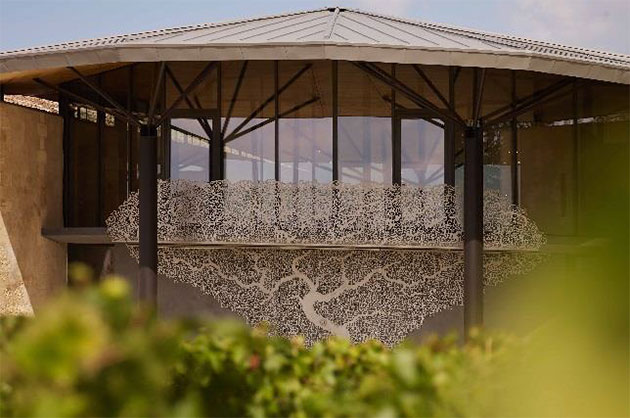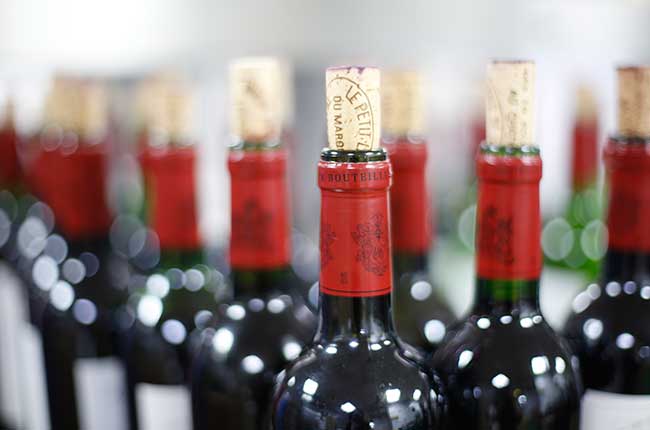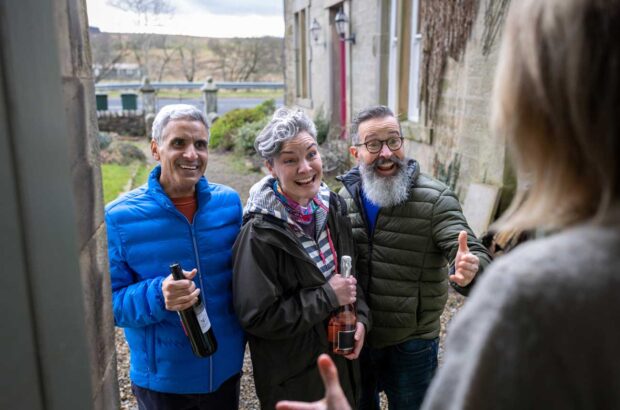Cheap money, new owners and the pursuit of perfect wine are propelling a new golden era of investment in Bordeaux’s centuries-old vineyards and wine estates.
Bordeaux’s 2016 en primeur tastings week was book-ended by purchase deals.
Lynch-Bages gave merchants something to discuss in airport queues by acquiring fellow Pauillac 1855 Château Haut-Batailley. And within five days, the Florida-based Moraes family had bought Bordeaux Supérieur estate Château Peyfaures.

Château Haut-Batailley vineyards.
More deals loom
Two very different deals, but both a sign of the times. French land agency Safer counted 28 deals for Bordeaux estates in 2016.
It’s part of a bigger investment story in the region, despite the market for Bordeaux wine facing several knocks in recent years.
Buyers aren’t necessarily chasing the crown jewels of the 1855 Classification – and it would be interesting to watch the French government reaction if they did. This is often about deals with the scope to develop supply chains and add value.
‘The strength of the US dollar continues to attract US investors,’ said Michael Baynes, of Christie’s-affiliated estate agency Maxwell Baynes. ‘However it is notable that during 2016 and 2017 the last five Bordeaux vineyards we have sold to US buyers have all been targeted business investments for the buyers.’
Baynes said that his company has three more deals in the pipeline, with memorandums of understanding signed.

Fresh ambition
New owners bring fresh ambitions. One example is Château Beauregard in Pomerol, acquired in 2014 by the Moulin family of Galeries Lafayette fame with the help of Smith Haut Lafitte’s Cathiard family, who took a minority stake.
The leadership has wasted little time, investing in a new winemaking facility with a reported 22 vats and also new cellars.
Beyond the new deals and owners, there is much talk at dinners, lunches and tastings about who is investing in what.
‘Money is cheap,’ quipped one estate owner to Decanter.com at last week’s en primeur opening dinner, when asked why there appeared to be so much funding in play. Some investors have taken advantage of the eurozone’s experiments with zero interest rates.
Château Kirwan, a stalwart of Margaux, chose en primeur week to inaugurate its own new cellars.

Part of the new Kirwan cellar building.
Recent years have seen several estates install new winemaking facilities, often involving gravity-fed systems that reflect desires for a lighter touch in the cellar, and more vats to aid a new era of precision viticulture.
Kirwan has installed 37 tulip-shaped vats with concrete walls, all custom-made in Italy, according to its MD, Philippe Delfaut. The estate said that it built the vat room ‘to adapt the size of the facility to suit the vineyard plots’.
Prieuré Lichine is another Margaux estate that recently introduced a series of smaller vats, in time for the troublesome 2013 vintage.
The rise of ‘lesser’ appellations

Now that’s what I call a wine wall…Inside Château Clarke.
Meanwhile, châteaux in so-called lesser appellations are becoming restless.
One of those is Château Clarke, owned by Baron Edmond de Rothschild, and arguably a sleeping giant of Listrac-Médoc – an appellation known for its unusually high plantings of Merlot in the heartland of Cabernet.
Clarke has a new technical director, Fabrice Darmaillacq, as of the 2016 vintage. It has brought in renowned Médoc consultant Eric Boissenot, in place of Michel Rolland.
It has also hired a vineyard consultant and has begun using drones to analyse vine health over its 55 hectares, thanks to a rental company in the area.
Boris Breau, MD of the Compagnie Viticole Baron Edmond de Rothschild, said the team wants to improve Clarke’s international reputation.
‘We have a list as long as my arm [of potential investments],’ he told Decanter.com. ‘We won’t do everything, but we just need to decide which we will do.’
See also: Anson on Listrac-Médoc – Spread the word
Tourism

Inside Bordeaux’s Cité du Vin…
All of these examples come before one begins to consider the money flooding into tourism across Bordeaux; of which the pinnacle must be the public-private partnership that created Bordeaux’s 80-million-euro ‘wine theme park’.
Several châteaux contributed to the cost of Cité du Vin, which has its own tram stop in central Bordeaux and opened last year.
Restaurants, tasting rooms and accommodation are becoming important sources of business for large and small producers, according to CIVB president Allan Sichel.
Among the larger ones, La Dominique in St-Emilion is welcoming several thousand visitors per year to its La Terrasse Rouge restaurant, which opened three years ago.
In Sauternes, Silvio Denz, owner of Lalique, is busy developing accommodation and a top-end restaurant at the Lafaurie-Peyraguey estate he acquired in 2013.
Back on the Right Bank, luxury hotel owner Michel Ohayon has bought control of Château Trianon to push forward plan to transform the estate into a luxury tourism destination.
Bordeaux is still a standard-bearer for winemakers everywhere, but it’s fair to say the region has had its critics in the wine world, particularly at the top-end. There will inevitably be a debate about prices in forthcoming 2016 en primeur campaign.
And it’s also worth noting that the overall number of winemakers in the region has fallen dramatically in the last half-century, from tens of thousands to nearer 6,000.
But, Bordeaux is not acting like a region whose reputation is on the ropes.
Stay tuned on Decanter.com this month for Jane Anson’s full Bordeaux 2016 scores
Château Clarke provided accommodation for the Decanter.com team during Bordeaux en primeur week.
More stories from Bordeaux 2016 en primeur week

Anson: Guide to the new wave of Bordeaux châteaux restaurants
Why Bordeaux wine tourists are now spoilt for choice...

Bordeaux: Lynch-Bages owner buys Haut-Batailley
Deal confirmed after weeks of rumours...

Bordeaux 2016 en primeur: Rush to taste despite global uncertainty
What's happening on the ground in Bordeaux...

Sauternes 2016 first impression: ‘Names count’ in a mixed vintage
Jane Anson gives her early view...

Bordeaux 2016 Right Bank: Anson’s first impression
Read Jane Anson's early thoughts on the barrel samples...

Bordeaux 2016 in Médoc: Anson’s first impression
Read Jane Anson's early thoughts on the barrel samples...







